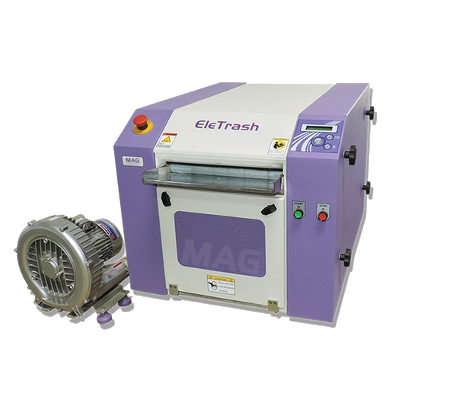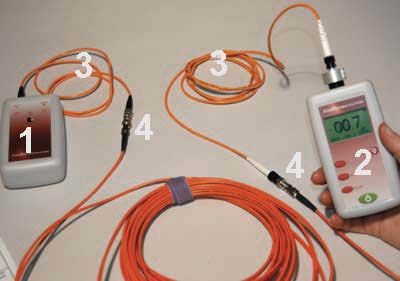How robotic vision empowers instant decision-making
Discovering the Influence of Robotic Vision on Modern Manufacturing Techniques and Quality Assurance
Robotic vision innovation is changing the landscape of modern-day production and top quality control. By incorporating advanced imaging systems and expert system, makers can accomplish extraordinary degrees of accuracy and effectiveness. This shift not only enhances production procedures however additionally addresses important challenges in preserving product requirements. As industries progressively count on these technologies, the implications for future production methods remain to be fully explored. What will this imply for the affordable characteristics of the marketplace?
Recognizing Robotic Vision Innovation
Robotic vision modern technology serves as the backbone of automation in modern-day manufacturing. It includes making use of video cameras, sensing units, and expert system to enable robotics to translate and react to visual details from their setting. This modern technology enables robotics to recognize, find, and evaluate items, making them with the ability of performing complex tasks such as assembly, evaluation, and product handling with accuracy. The integration of artificial intelligence formulas additionally improves the capability of robotic vision systems, permitting them to adjust to differing conditions and improve in time. By processing photos and data in real-time, robot vision systems can help with much faster decision-making and reduce errors in producing procedures (optical fibre diameter analyser). This technology not only boosts operational efficiency yet likewise assures that top quality requirements are met constantly. As the manufacturing landscape proceeds to develop, comprehending the ins and outs of robot vision technology ends up being crucial for leveraging its possible fully
Advantages of Robotic Vision in Manufacturing
Robotic vision modern technology provides considerable benefits in production by boosting accuracy and precision in jobs such as high quality control and setting up. This boosted degree of information assurances that items meet stringent standards, lowering waste and remodel. In addition, the assimilation of robotic vision can lead to raised manufacturing performance, allowing makers to maximize their processes and attain greater result rates.
Improved Precision and Accuracy
In contemporary manufacturing, improved precision and accuracy are essential for optimizing manufacturing processes and making certain product quality. Robotic vision systems make it possible for devices to execute complex tasks with amazing uniformity. These systems make use of advanced imaging innovations to detect minute details and variants in products, elements, and finished items. By evaluating visual information in real-time, robot vision considerably reduces human error, causing less issues and better requirements. Furthermore, boosted accuracy in dimensions and positioning facilitates much better alignment in assembly processes, which is crucial for complex layouts. Ultimately, the integration of robotic vision not only bolsters the integrity of making outputs however also cultivates confidence amongst customers concerning product integrity and efficiency. This precision is crucial in industries where quality is critical.
Increased Manufacturing Efficiency

Producers are increasingly turning to vision systems to boost manufacturing performance throughout different processes. These advanced systems allow real-time examination and monitoring, substantially minimizing downtime triggered by errors or flaws. By integrating robot vision, business can automate quality assurance, enabling for faster recognition of issues and minimizing the need for human intervention. This causes structured workflows, as robots can promptly adjust to changes in manufacturing needs without sacrificing accuracy. Vision systems assist in far better supply monitoring by accurately tracking elements and items, making sure ideal resource application. Ultimately, the adoption of robotic vision not just enhances performance however also contributes to greater result rates, reduced functional costs, and enhanced overall efficiency in the production market.
Enhancing Quality Assurance Processes
Robotic vision innovation substantially improves quality assurance processes in production by utilizing precision inspection strategies. These innovative systems promote real-time defect discovery, ensuring that products fulfill strict quality standards. Therefore, producers can minimize waste and enhance general effectiveness.
Accuracy Examination Techniques
Precision evaluation methods have actually transformed quality assurance processes in manufacturing, making it possible for the discovery of minute problems that traditional approaches might overlook. These techniques leverage progressed imaging modern technologies, such as high-resolution cameras and laser scanning, to achieve unequaled accuracy. By making use of robotic vision systems, makers can automate inspection jobs, making sure consistent efficiency and minimizing human error. The integration of maker discovering algorithms additionally boosts these systems, permitting them to adjust and improve with time. Additionally, precision examination facilitates the recognition of refined variations in item measurements and surface finishes, which can substantially impact overall product top quality. As a result, manufacturers can execute restorative actions extra quickly, eventually causing minimized waste and boosted customer complete satisfaction.
Real-Time Defect Detection
Taking advantage of innovative imaging innovations, real-time defect discovery transforms quality assurance procedures in production. By integrating high-resolution electronic cameras and innovative algorithms, producers can quickly determine abnormalities during manufacturing. This modern technology helps with instant corrective actions, decreasing waste and improving total efficiency. Real-time systems analyze products as they relocate along the assembly line, making certain that issues are identified and resolved right away manufacturing schedules. Furthermore, the execution of machine learning enhances the accuracy of these systems, enabling them to adjust to brand-new issue patterns gradually. As a result, makers profit from improved product high quality and lowered functional costs. Eventually, real-time problem discovery not just streamlines processes but also promotes a society of constant improvement in contemporary production environments.
Real-Time Data Evaluation and Choice Making
In the vibrant landscape of production, real-time data evaluation encourages systems to make swift, notified choices. By leveraging advanced robotic vision technologies, manufacturers can gather and refine huge quantities of information instantly. These systems examine visual inputs to monitor production processes, guaranteeing that any inconsistencies from Visit Website top quality requirements are identified and attended to quickly. Suppliers can optimize procedures by reallocating sources and readjusting process based on real-time insights.
The combination of information analytics enables for predictive upkeep, where potential devices failures are expected prior to they interrupt production. This aggressive technique lessens downtime and enhances total efficiency. optical fibre diameter analyser. The ability to make data-driven choices view it in real time significantly decreases waste and enhances product quality, permitting producers to react to market demands quickly. Therefore, real-time data evaluation not just streamlines production yet likewise fosters a society of continuous enhancement in modern-day manufacturing environments
Difficulties in Applying Robotic Vision Equipments
Executing robot vision systems in making offers a variety of difficulties that can impede their effectiveness. One considerable barrier is the complexity of integrating these systems with existing machinery and workflows. Makers commonly deal with compatibility concerns with heritage tools, bring about boosted expenses and downtime. Furthermore, the irregularity in product forms, sizes, and materials can make complex the calibration of vision systems, demanding considerable training and fine-tuning.
An additional challenge hinges on refining big quantities of aesthetic data in genuine time. High-performance computer sources are necessary, which may need more financial investment in framework. There is a scarcity of competent employees qualified of managing and preserving these advanced systems, leading to possible operational inadequacies. Lastly, ensuring the reliability and precision of robot vision systems under varying environmental problems positions a continuous obstacle. Dealing with these problems is essential for optimizing the prospective advantages of robot vision in manufacturing.
Future Fads in Robotic Vision for Manufacturing
As developments in fabricated knowledge and artificial intelligence proceed to progress, the future of robot vision in manufacturing shows up increasingly appealing. Emerging fads suggest a change towards more innovative imaging modern technologies, such as 3D vision systems and hyperspectral imaging, which will boost precision in top quality control processes. Integration with the Net of Things (IoT) will check over here allow real-time information analysis, allowing robotic systems to adapt quickly to modifications in the manufacturing atmosphere. Additionally, the growth of collaborative robotics (cobots) outfitted with innovative vision capacities is anticipated to help with seamless human-robot communications, boosting efficiency and safety and security on the . Furthermore, the consolidation of side computer will equip robotic vision systems to process information in your area, lowering latency and making it possible for faster decision-making. These technologies will not only simplify producing processes however also significantly improve item high quality, placing robot vision as a cornerstone of future industrial operations.
Frequently Asked Questions
Exactly How Much Does Robotic Vision Technology Normally Price?
Robotic vision modern technology commonly sets you back in between $10,000 and $100,000, relying on the intricacy and requirements. Variables affecting cost consist of sensing unit top quality, software application capabilities, and assimilation needs, making it vital to analyze particular task needs.
What Industries Are Many Impacted by Robotic Vision Improvements?
Robotic vision developments greatly effect industries such as production, automobile, electronics, and food processing - optical fibre diameter analyser. These sectors benefit from improved automation, boosted top quality control, and increased efficiency, resulting in structured procedures and minimized labor costs
Can Robotic Vision Equipments Be Integrated With Existing Machinery?
Robotic vision systems can certainly be incorporated with existing machinery. This assimilation enhances operational effectiveness, allowing makers to utilize advanced technologies without the requirement for total overhauls, thus enhancing manufacturing procedures and maintaining quality standards.

What Abilities Are Required to Run Robotic Vision Systems?
Operating robot vision systems demands proficiency in shows, an understanding of artificial intelligence, knowledge of image processing methods, and the ability to fix software and hardware concerns, ensuring seamless combination and suitable performance within producing settings.
Exist Any Type Of Safety And Security Worry About Robotic Vision in Production?
